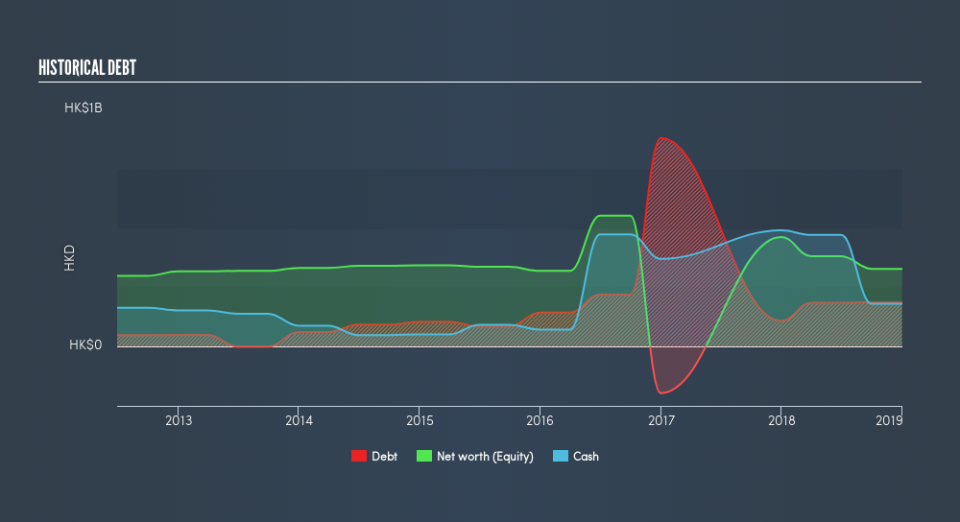You Might Like Unisplendour Technology (Holdings) Limited (HKG:365) But Do You Like Its Debt?

Want to participate in a short research study? Help shape the future of investing tools and you could win a $250 gift card!
While small-cap stocks, such as Unisplendour Technology (Holdings) Limited (HKG:365) with its market cap of HK$2.5b, are popular for their explosive growth, investors should also be aware of their balance sheet to judge whether the company can survive a downturn. Since 365 is loss-making right now, it’s crucial to assess the current state of its operations and pathway to profitability. We'll look at some basic checks that can form a snapshot the company’s financial strength. Nevertheless, potential investors would need to take a closer look, and I recommend you dig deeper yourself into 365 here.
Does 365 Produce Much Cash Relative To Its Debt?
365 has built up its total debt levels in the last twelve months, from HK$108m to HK$187m , which includes long-term debt. With this rise in debt, the current cash and short-term investment levels stands at HK$181m to keep the business going. Its negative operating cash flow means calculating cash-to-debt wouldn't be useful. As the purpose of this article is a high-level overview, I won’t be looking at this today, but you can take a look at some of 365’s operating efficiency ratios such as ROA here.
Can 365 pay its short-term liabilities?
At the current liabilities level of HK$206m, the company has been able to meet these commitments with a current assets level of HK$266m, leading to a 1.29x current account ratio. The current ratio is the number you get when you divide current assets by current liabilities. Usually, for Machinery companies, this is a suitable ratio since there is a bit of a cash buffer without leaving too much capital in a low-return environment.
Does 365 face the risk of succumbing to its debt-load?
With debt reaching 57% of equity, 365 may be thought of as relatively highly levered. This is somewhat unusual for small-caps companies, since lenders are often hesitant to provide attractive interest rates to less-established businesses. However, since 365 is presently loss-making, there’s a question of sustainability of its current operations. Running high debt, while not yet making money, can be risky in unexpected downturns as liquidity may dry up, making it hard to operate.
Next Steps:
365’s high cash coverage means that, although its debt levels are high, the company is able to utilise its borrowings efficiently in order to generate cash flow. Since there is also no concerns around 365's liquidity needs, this may be its optimal capital structure for the time being. Keep in mind I haven't considered other factors such as how 365 has been performing in the past. I recommend you continue to research Unisplendour Technology (Holdings) to get a more holistic view of the small-cap by looking at:
Historical Performance: What has 365's returns been like over the past? Go into more detail in the past track record analysis and take a look at the free visual representations of our analysis for more clarity.
Other High-Performing Stocks: Are there other stocks that provide better prospects with proven track records? Explore our free list of these great stocks here.
We aim to bring you long-term focused research analysis driven by fundamental data. Note that our analysis may not factor in the latest price-sensitive company announcements or qualitative material.
If you spot an error that warrants correction, please contact the editor at editorial-team@simplywallst.com. This article by Simply Wall St is general in nature. It does not constitute a recommendation to buy or sell any stock, and does not take account of your objectives, or your financial situation. Simply Wall St has no position in the stocks mentioned. Thank you for reading.


